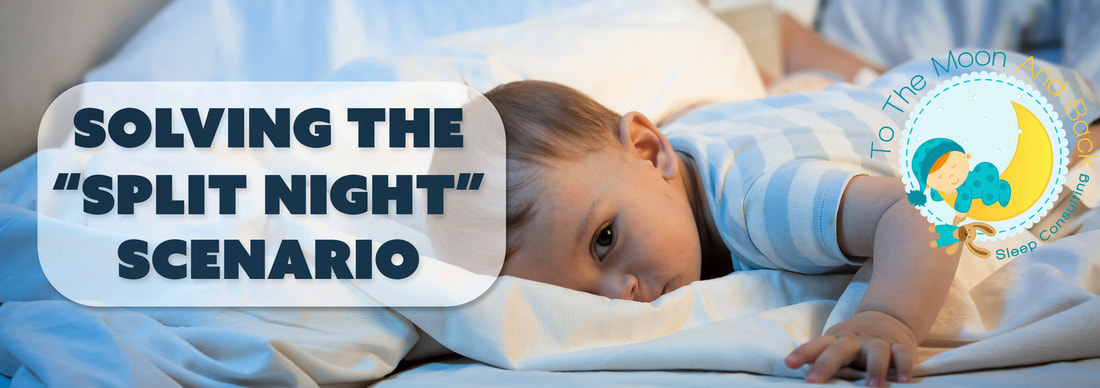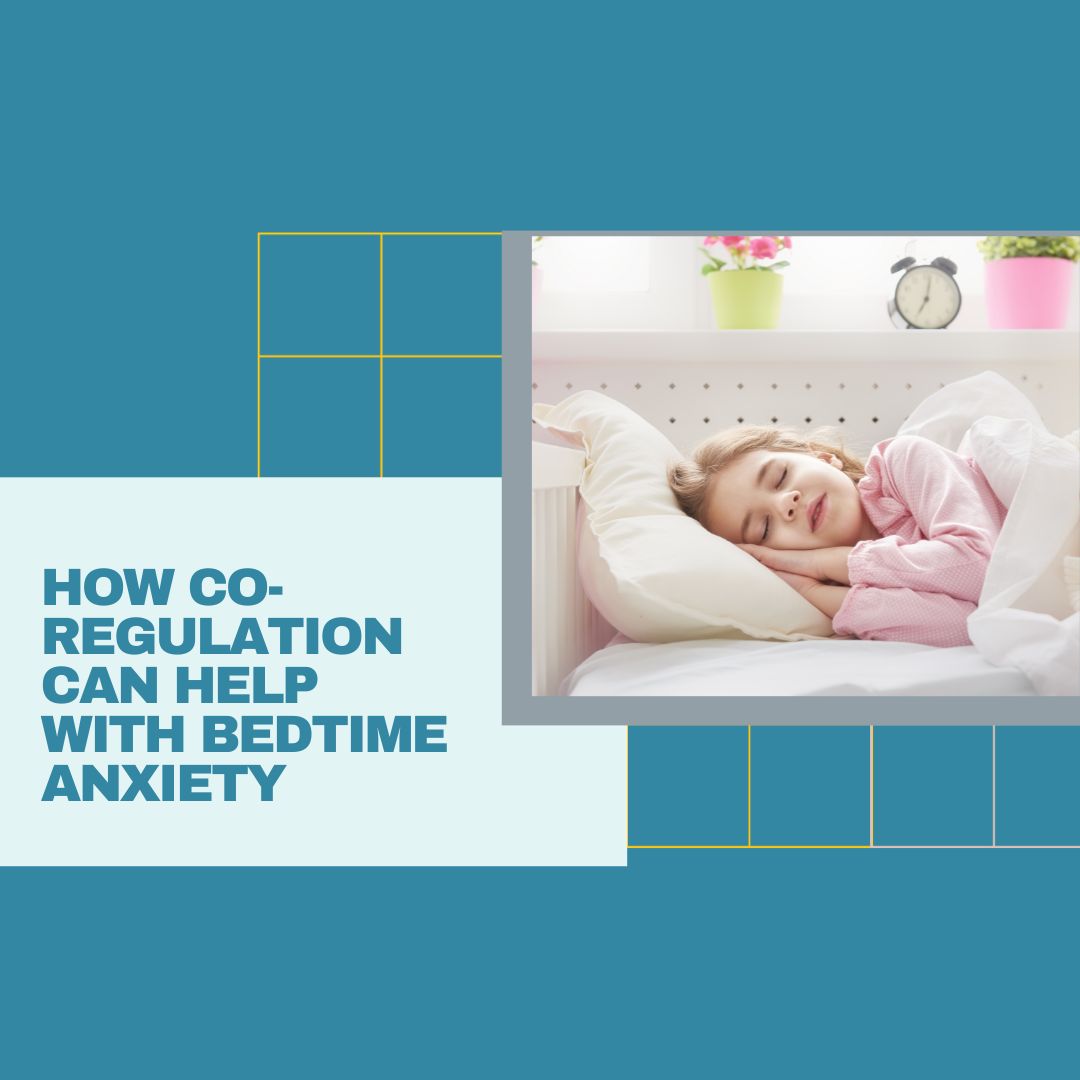|
Is your little one waking up in the middle of the night? No, no, not like that. I mean, like really waking up. Waking up and staying up. For, like… hours. If you’re the parent of a baby or toddler who’s dealing with segmented sleep, you know exactly what I’m talking about. This isn’t the middle of the night. “Go in and comfort your little sleeper for ten minutes until he gets back to sleep” wake up. This is a full-blown 3:00 a.m. dance party. It’s got a few names. Segmented sleep, bifurcated sleep, split nights, and it describes a situation where your little one sleeps for a long stretch, then wakes up happy and energetic in the middle of the night and stays that way for an hour or more. Slit Nights aren’t a new or unnatural phenomenon. Back before the widespread use of the electric light bulb, people would regularly sleep for a few hours, wake up for another hour or two, then go back to sleep. They’d use the time to read, smoke, pray, and have sex (not necessarily all at once), and then after an hour or two, they’d get back into bed and sleep until morning. (Apparently, it was also a typical time for visiting one’s neighbours. Not to hate on the old days, but if my neighbours came over unannounced at three in the morning, oooohhh, things would get biblical.) Nowadays, however, the vast majority of us go to sleep at night and, hopefully, close our eyes and sleep straight through until morning. But let me guess… your kiddo didn’t get the memo? Split nights are actually a pretty common issue. Baby goes down at 7:30 at night, wakes up at 3:00 in the morning, parties her ass off for an hour and a half, then goes back to sleep, apparently careless about the groggy, miserable day she’s set her parents up for. So let’s take a quick look at why this happens, and then we’ll learn how to solve the problem. Why Do Split Nights Happen? There are two major drivers when it comes to sleep. First, there’s our circadian rhythm, which is our natural tendency to fall asleep when it’s dark and wake up when it’s light. Then there’s our homeostatic sleep drive, commonly known as sleep pressure, which builds up over the time we’re awake. So ideally, over the course of the day, sleep pressure builds up, then at bedtime, when the pressure hits the sweet spot, baby puts her head down and goes to sleep. Then, as that sleep pressure begins to subside, circadian rhythm takes over, and baby stays asleep until morning. In the case of a split night, we could be looking at one of two reasons why they’re waking up. ● Your baby or toddler is not getting to bed early enough, OR… ● She is going to bed too early. Now before you pitch your phone out the window at that seemingly paradoxical explanation, check this out. How to Fix Split Nights? If your little sleeper is getting to bed too late, if too much sleep pressure has built up, the brain has this instinctive response that says, “Hey, you’re tired, but you’re not sleeping. I’m guessing that’s because there’s a carnivorous apex predator around, so we’d better get ready to make a break for it,” and then starts upping the cortisol levels. The brain means well, but it’s a little behind the times on our need for lion alerts. So this can make it tough for baby or toddler to get to sleep at bedtime since that cortisol’s got them a little bit jacked. It can also cause a full wake-up at the end of a sleep cycle, which commonly happens around 2 or 3 in the morning. Ugh. If this is the case, you’re one of the lucky ones. Treat this like any other nighttime wake-up, reassure baby that it’s still bedtime, comfort her and let her get back to sleep on her own, and consider moving bedtime up a bit over the course of a few nights. But then there’s the alternate scenario. What if your little sleeper gets to bed too early? In a situation where your baby or toddler’s getting lots of quality daytime sleep and going to bed early, it’s possible that there’s not enough sleep pressure built up to keep him sleeping until his circadian rhythm takes over and helps him sleep through the rest of the night, so up he gets. And now that there isn’t as much sleep pressure, and their circadian rhythm doesn’t have the horsepower to get them to sleep on their own, suddenly they’re up and active for an hour (or three!) while that pressure builds back up. Now, I’m all about early bedtimes. Too little sleep is a much bigger problem than too much. But suppose your baby or toddler's experiencing this kind of split-night sleep. In that case, it’s worth looking at their schedule and doing a little fine-tuning to ensure that you’re hitting the optimum sleep pressure right at the same time that baby’s going to bed for the night. I know plenty of situations can arise where you’ll want to get baby to bed a little early. For example, if she had a day of lousy naps and is clearly tired half an hour before bedtime, it’s the right move to get her to bed ahead of schedule. But try to avoid putting your little sleeper to bed early, more than one or two nights in a row. We want to prevent over-tiredness, but we also don’t want them in the crib at night for more time than they’re actually capable of sleeping. So if your baby or toddler's had a tough day and didn’t nap well, it’s fine to get her to bed a little early since that sleep pressure is likely already built up, but try to get her back onto the regular schedule starting the next morning, including her wake-up time. I know that this can all start to sound like an immaculately choreographed ballet. In some ways, it can be pretty complicated. Still, the more you understand the nuances and know where to make those minor adjustments, the better your baby or toddler will sleep. The less they’ll run into these regressions, setbacks, and interruptions. One final thing to consider if you’re getting ready to tackle this situation. This is not likely to be an overnight fix. Once your little one has gotten into this habit, getting them out of it can take some time. Like any attachment or dependency, overcoming it is an incremental process, and it’s likely to meet with some pushback, so if and when things get tough, remember your goal. You’re giving your little one the skills they need to sleep soundly through the night, and that contributes to their well-being in so many different ways. So stay consistent, be patient, and before too long, you and your little sleeper will both be enjoying full nights of deep, restful sleep. If you are having trouble with your child's schedule and are unsure what it should look like get our Free Sleep Needs Chart. It will help you determine wake windows, nap lengths, number of naps, bedtimes, along with wait times for night time interventions. AuthorErin Neri - Certified Pediatric Sleep Consultant and Owner of To The Moon and Back Sleep Consulting since 2016. Parenting a toddler can be a whirlwind of joy, laughter, and, sometimes, sleepless nights. If you’ve embarked on the journey of sleep training, you might be familiar with the term "extinction burst." It sounds daunting, but understanding and addressing it can be the key to a peaceful night’s sleep for both you and your little one. Let's dive into what an extinction burst is, why it happens, and how you can navigate through it successfully. What is an Extinction Burst? An extinction burst occurs when you first start to withdraw reinforcement from a behaviour—in this case, your toddler’s nighttime awakenings. Picture this: your toddler has gotten used to certain responses when they wake up at night, such as being picked up, rocked, or given a bottle. When you begin sleep training and stop these responses, your toddler might initially escalate their behaviour. This escalation is the extinction burst. Essentially, things get worse before they get better as your child tests the boundaries to see if their previous behaviour will eventually yield the desired response. Steps to Work Through the Extinction Burst
When to Seek Professional Help If you find that the extinction burst is lasting longer than expected, or if you're struggling to stay consistent and need additional support, don’t hesitate to seek help from a professional. A certified pediatric sleep consultant can offer personalized advice and strategies tailored to your child’s needs. They can also provide the emotional support you need during this challenging time. Final Thoughts Navigating through an extinction burst during sleep training can be exhausting, but it’s a vital step toward helping your toddler learn to self-soothe and sleep independently. By staying consistent, creating a comforting bedtime routine, and seeking help when necessary, you can guide your child through this phase and onto restful nights for the entire family. Remember, you’re not alone in this journey. Many parents have faced the same challenges and come out the other side with happier, well-rested children. Hold on to that thought, keep pushing through, and soon, peaceful nights will become the norm rather than the exception. If you need help through this stage of your sleep training journey I'd be more than happy to help. Book your Free 20-minute Sleep Evaluation Call today. I'll learn more about what's happening with your child's sleep, explain why and how I can help your family become a well rested one. AuthorErin Neri - Certified Pediatric Sleep Consultant and Owner of To The Moon and Back Sleep Consulting since 2016. Ensure a smooth transition when moving from crib to bed with these practical tips. Learn how to prepare, establish routines, and encourage independence. Transitioning your child from a crib to a bed is a significant milestone. This change can be quite turbulent for both parents and children. To ensure a smooth transition, it's important to plan and prepare carefully. Here are some tips to make the process easier and less stressful for everyone involved.
Understanding the Right Time for the Move The right time for moving from crib to bed varies for each child. Generally, you should wait until as close to three years old as possible to ensure that your child is developmentally ready for this transition. Look for signs like your child attempting to climb out of the crib, showing interest in beds, or outgrowing the crib. These indicators can help you decide when it's time to make the switch. Preparing for the Transition Involve Your Child in the Process. Including your child in the preparation process can make them feel more comfortable and excited about the change. Let them help pick out their new bed, bedding, and even the decor for their room. This involvement gives them a sense of ownership and control, making the transition smoother. Create a Safe Sleeping Environment Make sure the new bed is safe for your child. Choose a bed with rails to prevent falls, and place the bed on a soft surface like a rug or carpet. Remove any hazards from the room, such as sharp objects, small toys, or cords. Additionally, consider using a nightlight to provide a sense of security during the night. Establishing a Consistent Routine A consistent bedtime routine is crucial when moving from crib to bed. This routine helps signal your child that it’s time to sleep and can make the transition smoother. Here are some steps to consider:
Dealing with Resistance and Setbacks It's normal for children to resist moving from crib to bed or to experience setbacks. Here are some tips to handle these challenges. Be Patient: Transitioning from a crib to a bed is a big change for your child. Be patient and understanding if they resist or take time to adjust. Offer comfort and reassurance to help them feel secure. Be Consistent: Consistency is crucial during this transition. Stick to the bedtime routine and the new sleeping arrangement. Avoid giving in to requests to sleep in the crib or your bed, as this can create confusion. Address Fears: Your child may experience nighttime fears during this transition. Use a nightlight, provide a favourite stuffed animal or blanket for comfort, and reassure your child that they are safe. Avoid introducing new fears by keeping the environment calm and secure. Additional Obstacles: While moving from crib to bed is a significant transition within the home, there are times when families may face larger moves, such as relocating to a new city or province. For those considering long distance moving in Alberta, hiring professional movers can make the process much easier. This can be especially important when transitioning from a crib to a bed, which is already a big change in your child's life. Hiring movers allows you to relocate with minimal effort, focusing your energy on helping your child adjust to their new environment and sleeping arrangements. Make sure you find Alberta professionals who are experienced in relocating families and understand the challenges of such periods. Encouraging Independence Moving from crib to bed is an opportunity to encourage independence in your child. Here are some ways to promote this. Allow Choices: Give your child choices related to their new bed and bedtime routine. Let them choose their pajamas, bedtime stories, or a stuffed animal to sleep with. These choices empower your child and make them feel more in control. Encourage Self-Soothing: Teach your child self-soothing techniques to help them fall asleep independently. This can include holding a favorite toy, using a nightlight, or listening to soft music. Gradually reduce your involvement in their bedtime routine to promote independence. Monitoring and Adjusting Once your child has transitioned to a bed, continue to monitor their sleep patterns and adjust as needed. Here are some tips for ongoing support. Observe Patterns: Pay attention to your child's sleep patterns and behaviours. If they have difficulty falling asleep or wake up frequently, consider adjusting the bedtime routine or environment. Make Adjustments: Be flexible and willing to make changes if needed. This might involve adjusting the bedtime schedule, changing the sleeping environment, or revisiting the bedtime routine. Seek Professional Advice If Needed: If your child continues to have difficulty adjusting or experiencing sleep issues, consider seeking advice from a sleep specialist. They can provide guidance and support to help your child develop healthy sleep habits. Celebrating the Milestone Transitioning from a crib to a bed is a significant milestone for your child. Celebrate this achievement to reinforce positive feelings about the change. Here are some ways to celebrate:
Good Luck Moving from Crib to Bed Moving from crib to bed is an important transition for both parents and children. By preparing in advance, establishing a consistent bedtime routine, and addressing any challenges with patience and understanding, you can ensure a smooth and successful transition. With these tips, you can make the move from crib to bed a positive and rewarding experience for your child. Photo via Pexels Before I get rolling here, let me say that I am not anti-pacifier. I mean, what mother could be? We’ve all been saved from a major baby meltdown by the quick introduction of a dummy into a baby’s mouth at the right moment. Maybe they missed their sleep window by a little bit and were getting a bit cranky; perhaps they got an unexpected bump on the head, or you had to swoop in and take the dog treat out of their mouth. Just before they go into a tantrum, in goes the pacifier, and like magic, all is well. Pacifiers have benefits beyond preventing tantrums, as well. The AAP found that pacifiers can reduce the risk of SIDS, possibly due to the fact that baby has a more challenging time burying their face into soft bedding if they have a pacifier sticking out of their mouth. So, given that very substantial and necessary consideration, I’m making the following recommendations based on the supposition that your baby is over a year old. That doesn’t mean this is irrelevant if your little one’s younger than that, but just make sure you’ve carefully considered the pros and cons of taking away the pacifier before you make a decision. So here’s the conundrum from a sleep expert’s point of view: pacifiers can become a problem when it comes to sleep. If a baby’s accustomed to falling asleep with a pacifier in, it almost always wakes up in the night after it’s fallen out. It kicks up a fuss until mom gets up, finds it, and pops it back in its mouth. So, first off, let’s look at why babies can’t just fall asleep with a pacifier in and then peacefully sleep through the night. Then, we can look at some strategies for getting rid of the pacifier if you and your baby are ready to take the plunge. Sleep, for babies and adults alike, comes in cycles. Many of us are under the assumption that we fall asleep at the start of the night, go into a deeper sleep as the night goes on, and then gradually come out of it as the morning rolls around. It’s true that we go from light sleep to deep sleep and then back again, but it happens several times a night, depending on how long you sleep. For adults, a full cycle typically takes between 90 and 120 minutes. For a baby, it’s closer to 50. Suppose your baby won’t sleep at bedtime without a pacifier in their mouth. In that case, there’s a distinct possibility that they rely on that pacifier to sleep. When they get to the end of a sleep cycle, they get into that very light stage of sleep and might actually wake up, at which point they’re still tired, but they might have trouble getting back to sleep because “Hey! Where’s the pacifier? I can’t get to sleep without my pacifier!” Suppose they can’t find it or haven’t figured out how to put it in on their own yet. In that case, they’re going to get upset because they can’t get back to sleep, and they’re going to start crying for someone to come and rectify the situation. And that, right there, is the definition of what we in the sleep consulting field call a “sleep prop.” Sometimes, it’s feeding, sometimes it’s rocking, and sometimes it’s some crazy combination of a bunch of things, but essentially, it’s something that babies depend on to get to sleep that they can’t provide on their own when they wake up in the night. More than anything, that’s the secret to sleeping through the night. Getting rid of sleep props is, hands down, the most critical component to getting your little one sleeping peacefully from the time you put them to bed until they wake up, happy and refreshed, in the morning. So, if you’re reading this and thinking, “That’s IT! That’s exactly what’s happening with my baby!” you’ll probably want to take steps to get rid of that pacifier. I have a few tips to get you through the process quickly and peacefully. When it comes to breaking bad habits, I’m a cold turkey advocate, and this situation is no different. Toddlers do better with absolutes than with moderation, so my advice to parents is almost always to pick a day to make the change, explain it to your little one, and then toss all the pacifiers into the trash. Toddlers can often adjust to new situations remarkably easily so long as things are clear and consistent. So don’t save one for emergencies or just-in-case scenarios. It will be too easy for you to fall back on the pacifier to get a quick solution if your baby is having trouble sleeping. Then you’ll just be causing confusion. Alright, you’ve made the decision, explained the situation to your toddler, and signed a mental contract with yourself that you’re not going to do it by half measures. You’re ready to go all in. What’s next? Now’s the time to flex those creative muscles and devise a plan. How are you going to spin this change in a positive way? Toddlers typically embrace the idea of growing into “big kids,” so marking it as a milestone can be a big help. Make sure to present the change as a very exciting and joyous occasion. This is a bit of a dirty parenting trick. Still, you could round this off by introducing a “Pacifier Fairy,’ by telling your toddler that the Pacifier Fairy is coming to collect all of their dummies and, in exchange, will leave them a special surprise. Whether that’s something your little one will embrace, I leave it up to your discretion.  One quick side note here: I’ve seen a lot of situations where parents with a toddler and a newborn or younger sibling in the house will give the older baby’s pacifiers to the younger one. On its face, this seems like a good idea, but it can breed some resentment from your toddler when they see their younger sibling sucking on their pacifier. If you can, get rid of your toddler’s pacifiers and get different ones for the younger child. So, you’ve laid the groundwork, your little one has grasped what’s going on, and the house is now pacifier-free. Now, you’ll want to brace yourself because, in about 99% of all cases, your toddler will go a little bit bananas while they adjust to the new reality. It’s nothing to be concerned about; we all get a little irritable when we break a habit, but I want you to know that it’s rarely a seamless transition. There’s going to be some pushback. When that pushback hits, and your toddler starts to lose it a little, my advice is to distract, distract, distract. Keep some of their favourite treats on standby, have the iPad cartoons ready, and quickly turn their attention to something else when they start to fuss about the lack of a pacifier. You can acknowledge their frustration and offer them as much comfort and support as needed but don’t apologize or give in. Remember that you’re the authority figure here. If you’ve decided that the pacifier is a thing of the past, that’s the way it is. Giving them a pacifier at this stage is only going to reinforce the idea that crying or fussing is an effective tool for getting their way. Every toddler is obviously a unique individual, so use these guidelines in conjunction with your intuition. Within a few nights, maybe a week, your little one should be Binky-free, and your whole family should enjoy the benefits of those glorious, sleep-filled nights. AuthorErin Neri - Certified Pediatric Sleep Consultant and Owner of To The Moon and Back Sleep Consulting since 2016.  As a Certified Child Sleep Consultant, one of the most distressing concerns I encounter from parents involves night terrors. Understanding what night terrors are and how to handle them can be a beacon of hope amid nighttime turmoil. This guide aims to shed light on this sleep disorder, providing insights and strategies to help parents and children navigate these dark moments. What Are Night Terrors? Night terrors, also known as sleep terrors, occur during the non-REM (Rapid Eye Movement) stage of sleep, typically within the first few hours after a child falls asleep. Unlike nightmares, which happen during REM sleep and can often be recalled, night terrors are characterized by intense fear, screaming, sweating, confusion, and even sleepwalking, with little to no recollection of the event the following morning. These episodes can last from a few minutes up to 30 minutes and are more common in children aged 3 to 12 years old. It's important to note that night terrors are a part of a child's development and usually aren't a sign of a deeper psychological issue. Causes of Night Terrors The exact cause of night terrors is poorly understood, but they're thought to be related to over-arousal of the central nervous system during sleep. Several factors can increase the likelihood of night terrors, including:
What Can Parents Do? While night terrors can be alarming, there are several strategies parents can employ to help manage and reduce the frequency of these episodes:
Night terrors can be a frightening experience for parents. However, with understanding, patience, and the implementation of strategies to promote healthy sleep habits, most children outgrow night terrors with time. Remember, you're not alone; support is available to guide you through these challenging nights. AuthorErin Neri - Certified Pediatric Sleep Consultant and Owner of To The Moon and Back Sleep Consulting since 2016. If you’re reading this, you likely have a little one who’s been falling asleep in an awkward position. You may have heard that it can be an issue and are looking to learn how to deal with it ahead of time. You may also be oddly interested in the most random blog post topics you can find online. Either way, I will do my best to ensure you walk away from this post feeling like you got some serious value out of it. So your baby has learned to stand up! Congratulations on this wonderful milestone! It’s such an exciting time to be a parent, and this is such a massive step into the world of development that’s coming your way very soon. Many babies have issues when they first learn to stand up; they haven’t learned to get back down yet. During the day, this doesn’t present much of an issue. Your little one can spend all day practicing going from standing to seated while you’re next to them and helping them through it. But once nighttime rolls around, this becomes a whole other issue. I know the Catch-22 this puts parents in, believe me. On the one hand, you can’t just leave your baby in a situation where they might fall down and hurt themselves, but on the other, if you keep going in and laying them down, they don’t learn how to do it themselves. Moreover, they’ll quickly learn that standing up and making a fuss is a pretty effective way to get mom or dad back into their room and pay attention to them. So there’s a fine line that we need to walk to help baby figure out how to solve this little situation they find themselves in without creating a bad habit that could sabotage their sleep. If your baby hasn’t started this behaviour yet, let me warn you: It’s frustrating—more so than the average middle-of-the-night wake-up—because the solution is so totally obvious. You’ll likely find yourself saying, “Just lie down, already!” more than a few times before this gets resolved. As with all parenting, patience is essential. Keep in mind that your baby may not know how to go from a standing position to a sitting one on their own yet, and they may not realize that sleep comes a whole lot easier when you lie down. Remind yourself of this when they wake you up for the fifth or sixth time in three hours because they’ve woken up and gotten back on their feet again, fussing because they can’t get back to sleep. The quickest way through the first part of the equation is to develop that standing-to-sitting skill, so during the day, practice going from standing to sitting whenever you can. When a baby pulls herself up to a standing position, try putting their favourite toy or stuffie on the ground nearby. Gently encourage them to go from a standing position back down to ground level to get their reward. Once they’ve mastered that skill, however, that second hurdle may still be an issue. They may not realize that sleep is much easier to achieve when lying down. It seems like it should be instinctive, but many things seem that way when you’ve been doing them all your life. When you’ve only been around for nine or ten months, it might not seem so intuitive, so again, patience, mama! We don’t want to create a situation where baby starts relying on you to do the work for her, so avoid repeatedly laying her down when she stands up in the crib. Do it a few times at first to show her what’s expected, but switch to a more suggestive approach that doesn’t involve contact once that’s established. Pat the mattress and use a key phrase, like, “Lay your head down” or “Come lie down, baby,” before too long, they should start to connect the dots and realize that lying down is the best way to get to sleep. Remember, even though it might appear that your little one is fighting sleep sometimes, that’s rarely the case. They want to sleep, but they lack the skills necessary to get there on their own, so help them figure it out without doing the work for them. They’ll take care of the rest as soon as they develop a little confidence and ability. And one last little tip before I leave you! Hats off to all of the single parents out there and the fantastic work they do, but if you’re raising baby with a partner, talk this out with them and come up with a plan that both of you can agree on and follow through with. One parent responding with one set of expectations while another responding totally differently will confuse the baby even further in a situation where they’ve already got a lot to figure out. You will need to respond in the same way for your expectations to be clear, and you’ll see results much quicker if you’re working from the same playbook. As always, be calm, be patient, and be consistent. The hard work now will pay off a thousand times when your little one sleeps soundly through the night and happily goes down for naps during the day. AuthorErin Neri - Certified Pediatric Sleep Consultant and Owner of To The Moon and Back Sleep Consulting since 2016. “What are you looking forward to?” This is usually one of the first questions I ask parents when I partner with them. It helps them visualize what life will be like in just a couple of weeks when their baby sleeps soundly through the night and takes long, rejuvenating naps. For most parents, the answer is right there in the question. They just want their baby to get the sleep they need to be happy and healthy, and obviously, they want the same for themselves. But once they’ve moved past the first few blissful mornings when they wake up and realize that their baby has slept through the night and is still sleeping, they start to discover that a well-rested baby brings some unexpected benefits. The number one among them is the ability to leave the baby overnight with the grandparents. There’s something absolutely magical about sleepovers. Spending the night somewhere outside of your home has a very intimate quality to it. Whether you’re a young kid spending the night at a friend’s house, the first time you and your partner sleep in the same bed, or the first time you stay in a hotel on your own, sleeping somewhere forges an emotional connection, and for grandparents, having their grandchild sleep in their home is beyond special. It’s a reminder of their days as new parents, a living, breathing testament to the family they’ve built together, and a chance to wrap themselves up in all that family love that’s so saturating when there’s a baby in the house. For mom and dad, this is an opportunity to go out on a well-deserved date night! Most parents I work with haven’t enjoyed that luxury since the day they brought their baby home from the hospital, whether 3 months ago or 3 years ago. Hence, taking advantage of a reliable, enthusiastic (and usually free!) overnight babysitter allows them to reconnect in a way they haven’t enjoyed for far too long. OK, putting the sentiment aside for now, there is some groundwork to be done before you drop your little one off at your parents’ place. You’ve completed stage one, coach your baby, so now it’s time for stage two. Coach your parents. Now, obviously, some grandparents will be completely awesome, wonderful, and fully compliant with whatever you tell them to do vis-a-vis their grandchild. But not all of them. Some grandparents have very, shall we say, entrenched views on parenting. After all, you’re living proof of their expertise and experience. It can be a bit of a balancing act to insist that your parents respect your little one’s schedule and sleeping arrangements while still respecting their role as experienced and incredible caregivers. So today, I’d like to give you a few tips on how to do exactly that so your whole family, including those beloved members outside of your home, can benefit. 1. Respect Your Elders Above all, remember that these are not rookies. They’re seasoned veterans who have been through everything you’re going through now, so even though you may need to establish some ground rules, don’t approach it the same way you would a teenage babysitter. Demonstrating confidence in their abilities will help ensure that whatever rules you do lay down, they’ll be adhered to. 2. Be Authentic I see so many parents trying to play parenthood off as if they’ve got everything under control at all times, even with their own parents. I mean, if anyone knows how tough raising a child is, it’s grandparents, so don’t be shy to let them know how difficult it was to function when your baby was waking up every hour at night and how hard you’ve worked to remedy the situation. Understanding the emotional investment you’ve put into solving your little one’s sleep issues will help them feel a personal commitment to the routine. 3. Explain the Incentives Grandparents crave interaction with their grandkids. I mean, they absolutely crave it. They’re like baby-interaction vampires. Not that anyone can blame them, of course. Smiles and giggles and burps from a baby are wonderful to anyone, but to that baby’s grandparents, they’re positively life-affirming. As such, they tend to want to keep the baby awake longer than recommended. (This is especially true in the case of newborns, who can typically only handle about 45 minutes to 1 hour of awake time before they need to go back down for a nap.
4. Share Your Experience Suppose you’ve already got your baby sleeping well at night and napping well during the day. In that case, you know what a difference it makes to their personality. Personally, I could not believe the improvement in my baby’s mood once we had gotten the whole sleep situation figured out. Parenting was exponentially more enjoyable when my little one was basically always in a good mood. It may sound crazy, but I just liked being around my baby so much more.
5. Equate Sleeping With Feeding If there’s one thing a grandmother won’t abide, it’s a hungry baby. The average grandmother won’t accept a hungry anything, come to think of it. But when it comes to babies, they’ll move heaven and earth to make sure that little ones are adequately fed. Putting sleep on par with feeding priority-wise can help ensure that the same level of dedication gets devoted to getting baby down for naps and into bed on time. So when you’re going over the babysitting guidelines, try to avoid getting into the minutiae and stressing how important those two things are when they’re taking care of their grandchild. One last thing I’d like to mention here because I think it’s super important: there’s a good chance your parents might end up being guilty of a wee bit of sabotage. For example, if a baby wakes up at night and cries, they might respond immediately and feed them back to sleep. Or they might allow your toddler to sleep in their bed with them. They may hold them and rock them to sleep at bedtime. That can cause some severe anxiety for a parent who’s invested a whole lot of time, effort, and emotional capital into breaking those sleep associations. However, I want to reassure you that there’s typically no need to panic and call off any future sleepovers. Babies, even newborns, are surprisingly adept at recognizing different sleeping environments and understanding the rules in them, so just because they get rocked to sleep at grandma’s place doesn’t mean they’ll revert back to that expectation when you get them home. If they’ve developed some strong independent sleep skills, they’ll be back to normal pretty much immediately. So don’t lose your mind if your mom tells you she let baby fall asleep on her chest. A gentle suggestion that she not do it all the time, combined with the concession that you know how hard it is to resist a baby falling asleep on you, should be all that’s needed. AuthorErin Neri - Certified Pediatric Sleep Consultant and Owner of To The Moon and Back Sleep Consulting since 2016. Understanding Co-regulation Co-regulation refers to the process where an adult helps a child manage and understand their emotions and behaviours. This is especially crucial in young children who are still developing self-regulation skills. By providing a calming presence and demonstrating healthy emotional responses, adults can guide children in managing their own emotions. Importance in Managing Bedtime Anxiety Bedtime can be a source of heightened anxiety for many young children. Fears of the dark, separation from parents, or simply the transition from day to night can be overwhelming. Co-regulation provides a structured and comforting presence that can alleviate these anxieties. How to Implement Co-regulation
Conclusion Co-regulation is not only about managing a child’s immediate anxiety; it's also about teaching them lifelong skills in emotional regulation. By practicing these techniques, parents and caregivers can provide a supportive environment that helps young children navigate their anxieties, especially at bedtime, leading to more peaceful nights and a stronger emotional foundation. AuthorErin Neri - Certified Pediatric Sleep Consultant and Owner of To The Moon and Back Sleep Consulting since 2016. Debunking Myths: The Truth About Cereal in a Baby's Bedtime Bottle
As an infant sleep expert, I want to clarify a common belief among parents: adding cereal to a baby's bedtime bottle to help them sleep longer. This practice is not only ineffective but can also be harmful to your baby's health and sleep patterns. Understanding Sleep and Nutrition The idea that cereal in a bottle will make a child feel fuller and sleep longer at night is a misunderstanding. A baby's ability to sleep through the night is more about their developmental stage and their ability to self-soothe, rather than the amount of food consumed before bedtime. The Risks of Early Introduction of Solids Introducing solids, including cereal, too early can be risky for your baby:
The Role of Sleep Props Often, the issue with a baby's sleep is their reliance on sleep props, such as feeding or rocking, to fall asleep. Teaching babies to fall asleep independently is key to helping them sleep through the night. Caloric Considerations Adding a tablespoon of baby cereal to a bottle adds about 57.2 calories. This slight increase in calories is unlikely to significantly affect a baby's sleep duration. Sleep quality and duration are influenced more by sleep habits and developmental stages than by a small increase in caloric intake. In Conclusion In essence, adding cereal to a baby's bedtime bottle is not advisable. It doesn't contribute to longer sleep and can pose health risks. Fostering good sleep habits and allowing your baby to self-soothe are far more effective for healthy sleep patterns. Always consult with a pediatrician before changing your baby's diet or sleep routine. Remember, each baby is unique and may have different needs. |
To The Moon and Back Sleep ConsultingProviding families the tools & support they need to get their little ones sleeping through the night and napping like champs! Everyone has more fun when they are well rested! Visit Wollino - Discount Code: TOTHEMOONANDBACK10
Browse
All
|
All information provided on this website, including texts, images, and other materials, are for informational purposes only and should not be considered a replacement for assessment or treatment by a healthcare provider.
© COPYRIGHT 2016-2024 TO THE MOON AND BACK SLEEP CONSULTING. ALL RIGHTS RESERVED. WAKING GIRL WEB DESIGN
© COPYRIGHT 2016-2024 TO THE MOON AND BACK SLEEP CONSULTING. ALL RIGHTS RESERVED. WAKING GIRL WEB DESIGN




















 RSS Feed
RSS Feed








